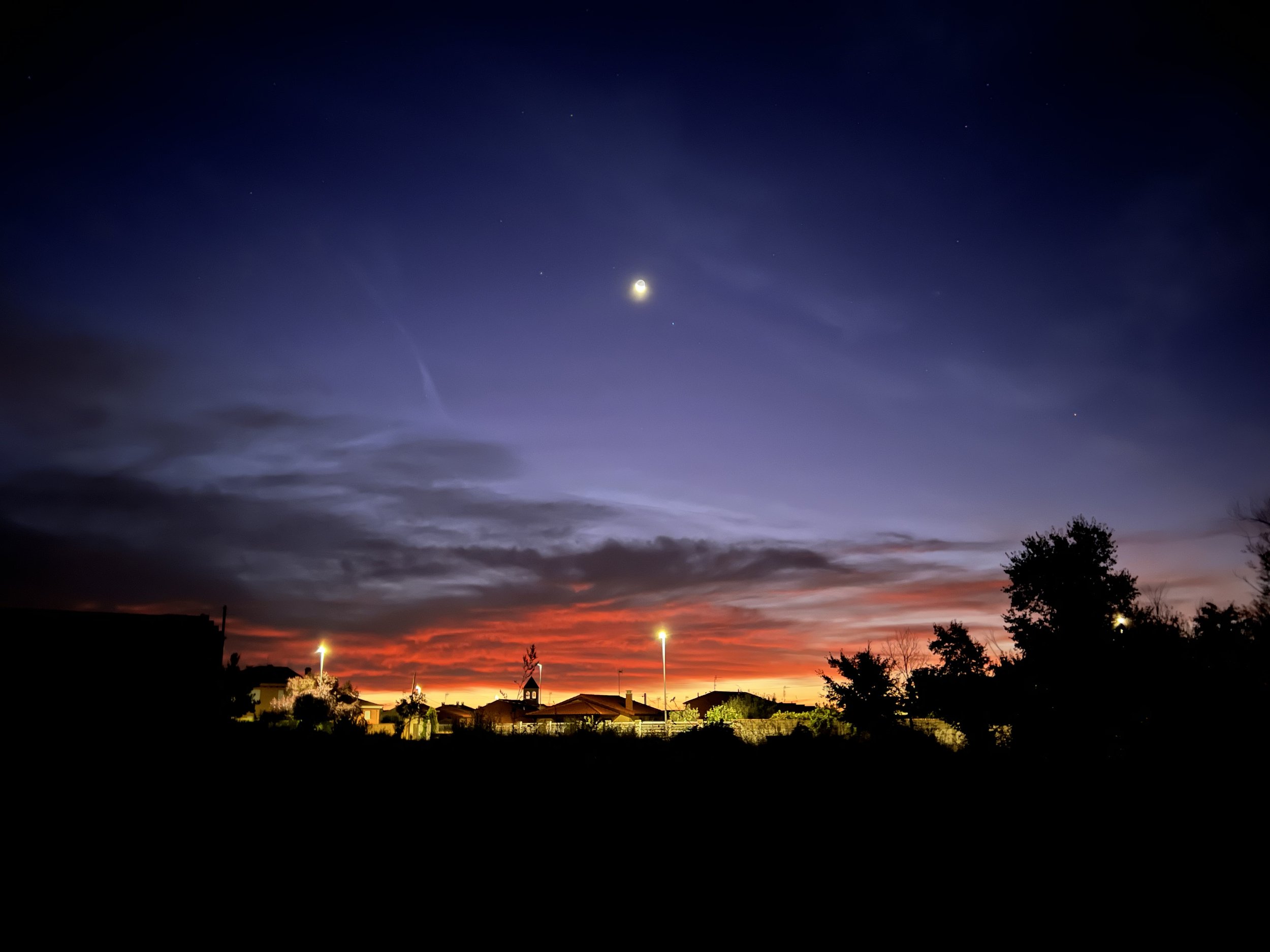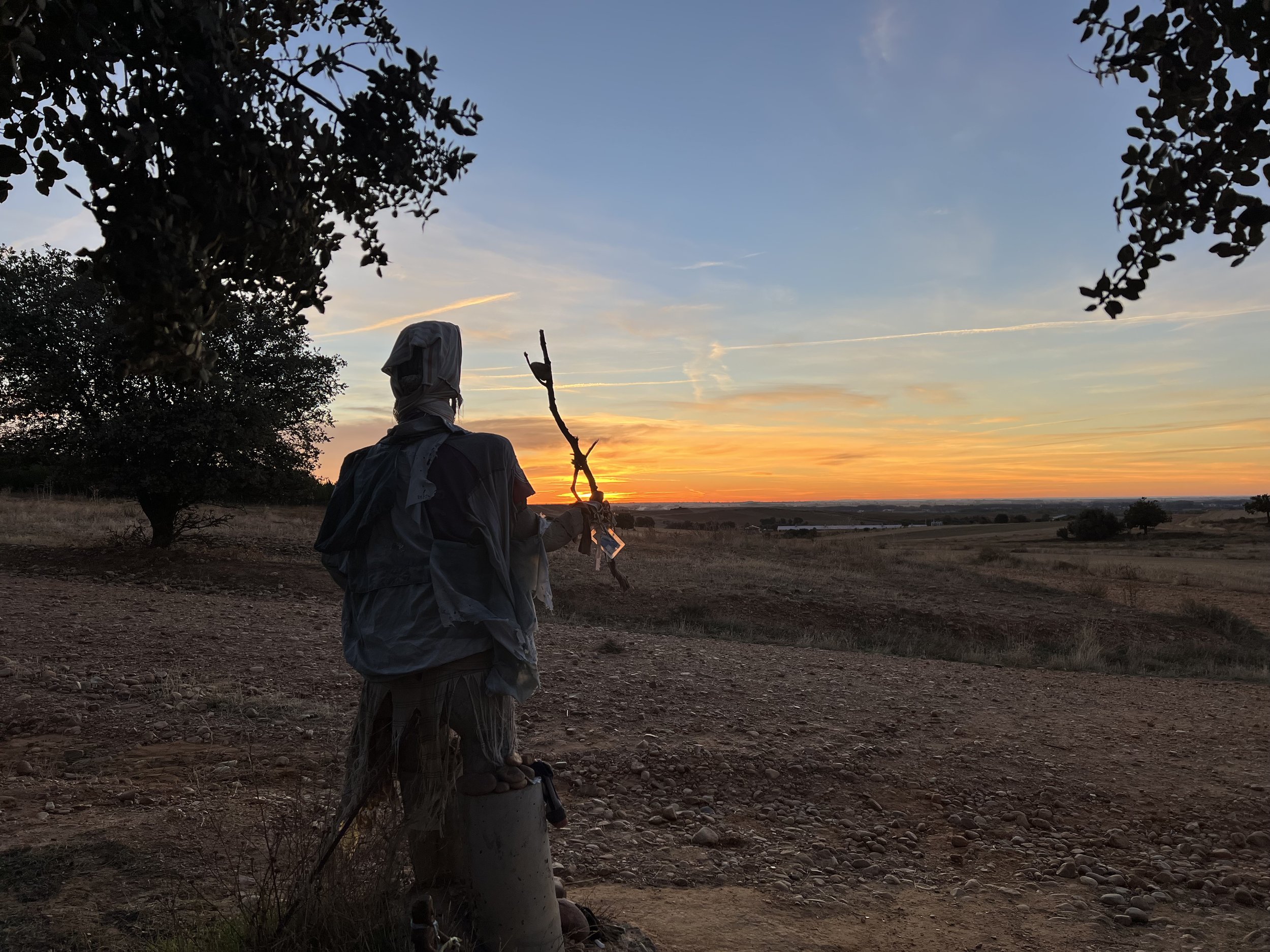Camino Francés - Day 24: Hospital de Óbrigo to El Ganso
I left Hospital de Órbigo just before sunrise, around 6:45 a.m., hoping to cover as much ground as possible before the afternoon heat. The path undulated gently today, alternating between rolling hills and flatter stretches — a refreshing change from the endless plains of earlier days. As I passed through farmland and small villages, I stopped to photograph the stars fading into the dawn sky and watched a soft pink sunrise spread across the horizon.
Descending toward San Justo de la Vega, I came across a whimsical pilgrim statue with a built-in fountain — when you turn the tap, water pours from a gourd straight into the statue’s mouth. It made me smile; a small, playful reminder of how creativity appears in the most unexpected places along the Camino. Further down the road, I saw a group of sheep herders managing their flock, with dogs darting around to steer both animals and curious onlookers away. I lingered for a while, watching the calm rhythm of their work before continuing onward.
Not long after, I met a fellow Canadian pilgrim walking her third Camino. We fell into an easy conversation about the different routes she’d done and how each journey had left its own imprint. Together, we entered Astorga, where she planned to stop for the night. After exchanging contacts, we wished each other buen Camino and parted ways.
From Astorga, the final stretch to El Ganso felt long and exposed under the full glare of the afternoon sun. I paused at Murias de Rechivaldo and Santa Catalina de Somoza for rest and cold drinks before pushing on to my final stop. Tonight’s lodging is one of the most unique yet — a teepee at Albergue Indian Way. It’s the first time I’ve slept in one since childhood, and it feels both nostalgic and adventurous, a fitting end to a demanding but memorable day.
History & Background
The route from Hospital de Órbigo to El Ganso leads pilgrims through the historic city of Astorga, an important crossroads where the Camino Francés meets ancient Roman and Visigothic routes. Astorga was once a major Roman administrative centre known as Asturica Augusta, and its impressive heritage is still visible in the Roman walls, the Episcopal Palace designed by Antoni Gaudí, and the striking Gothic cathedral that dominates the skyline.
Beyond Astorga, the path begins its steady climb into the Maragatería region, a rugged area known for its traditional stone villages and the distinctive culture of the Maragatos, a people historically known for trade and muleteering. The landscape becomes hillier and more scenic here, signalling the gradual approach toward the Montes de León and the climb to Cruz de Ferro in the coming days.
Getting There
Most pilgrims reach Hospital de Órbigo on foot from León (Day 23), continuing westward toward Astorga and El Ganso as part of the traditional Camino Francés. This stretch marks the transition from the flatter Meseta terrain to more mountainous landscapes.
Hospital de Órbigo is accessible by bus from León or Astorga, though schedules can be limited. Astorga, a key transport hub along the Camino, has both train and bus connections to León, Ponferrada, and Madrid. From Astorga, taxis can also be arranged to nearby villages like El Ganso or Rabanal del Camino if needed.
Route Overview
Distance: 31.03 km (Albergue Verde → Albergue Indian Way)
Total elevation gain: 386 m
Duration: 6 hr 15 min (with breaks 7 hr 33 min)
Difficulty: Hard
Cost Breakdown
Accommodation: Albergue Indian Way (Reserved via WhatsApp) — €12
Food: €17.3











